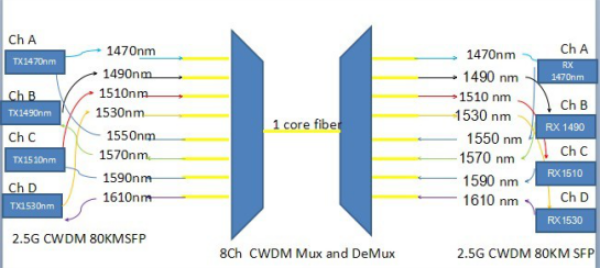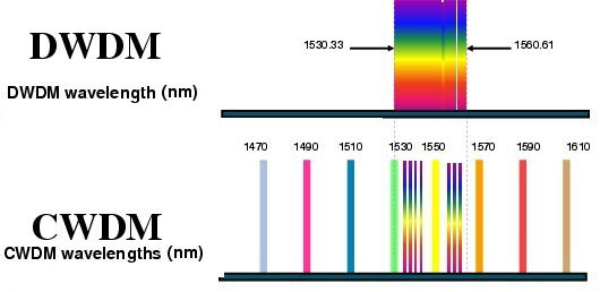With the continuous development of the optical communication industry, new technologies and cost-saving solutions continue to derive. For example, CWDM and DWDM products are increasingly widely used, so today we will learn about CWDM and DWDM products!
CWDM is a low-cost WDM transmission technology for the access layer of the metropolitan area network. Effectively save fiber resources and networking costs, it solves the two problems of fiber shortage and transparent transmission of multiple services. The network can be built and the business can be carried out in a short time.
Advantages of CWDM:
※ The most important advantage of CWDM is the low cost of equipment.
※ It can reduce the operating cost of the network.
※ It can significantly increase the transmission capacity of optical fiber and improve the utilization of optical fiber resources.
※ Small size and low power consumption.
※ Has good flexibility and scalability
DWDM can combine and transmit different wavelengths in the same fiber at the same time. In order to be effective, one fiber is converted to multiple virtual fibers. DWDM usually has two application forms: open DWDM and integrated DWDM.
Advantages of DWDM:
※ Its protocol and transmission speed are irrelevant.
※The multiplexer and splitter of the integrated DWDM system are used separately at the transmitter and receiver
※ The integrated DWDM equipment has a simple structure and a smaller volume, only about one-fifth of the space occupied by the open DWDM, saving computer room resources
※The integrated DWDM system only uses passive components (such as multiplexers or demultiplexers) at the receiving and transmitting ends. Telecom operators can place orders directly from device manufacturers, reducing supply links and lower costs, thereby saving equipment costs.
CWDM and DWDM are both wavelength division multiplexers, so what is the difference between them? CWDM (ie, sparse wavelength division multiplexing) and DWDM (ie, dense wavelength division multiplexing), literally we can roughly see the difference between the two: “dense” and “sparse”. Sparse Wavelength Division Multiplexing, as the name suggests, is a close relative of Dense Wavelength Division Multiplexing.
Their differences are mainly reflected in the following three points:
1) CWDM carrier channel spacing is relatively wide, therefore, only 5 to 6 wavelengths of light waves can be multiplexed on the same optical fiber, and the difference between “sparse” and “dense” names comes from this;
2) CWDM modulated laser uses uncooled laser, while DWDM uses cooled laser. The cooled laser uses temperature tuning, and the uncooled laser uses electronic tuning. CWDM is now very popular among general enterprise application providers. Simply put: DWDM is a subdivision of CWDM.
3) The equipment use environment is different. CWDM is mainly used in the convergence layer and the access layer; DWDM is used in the railway communication working environment.
Post time: Jul-03-2021



